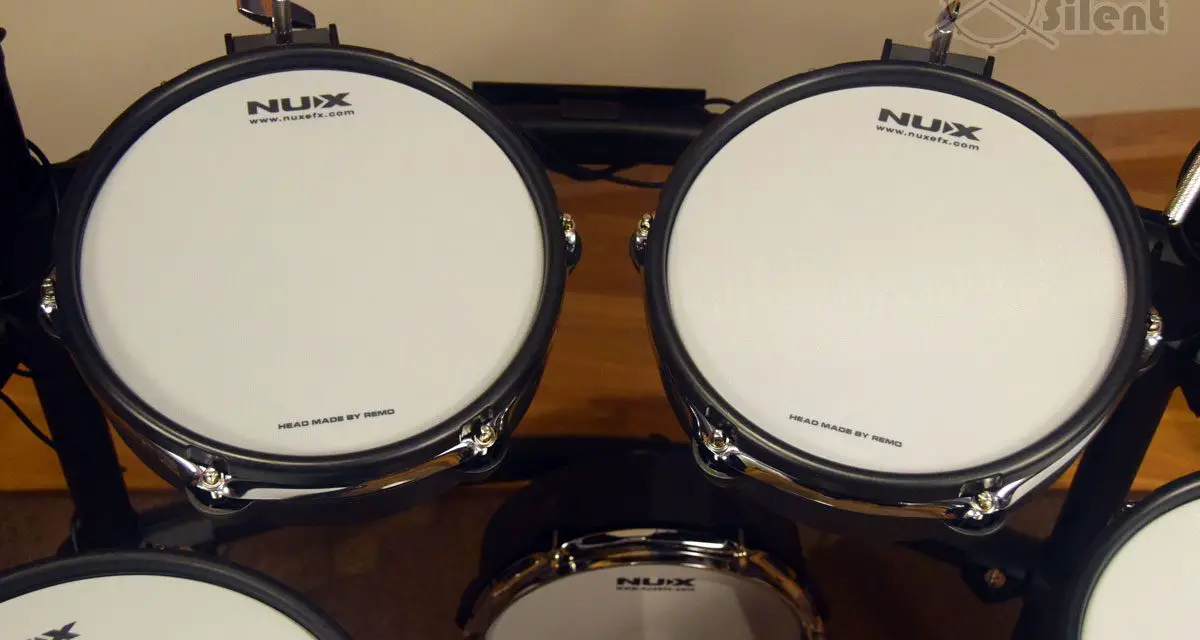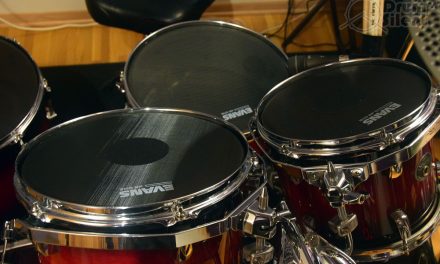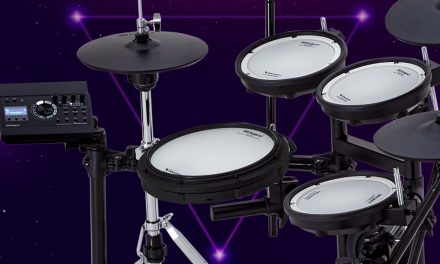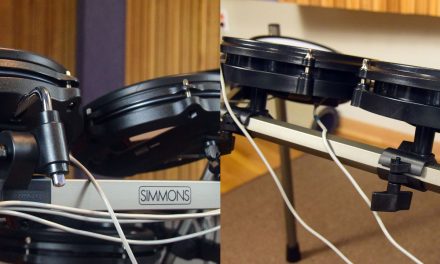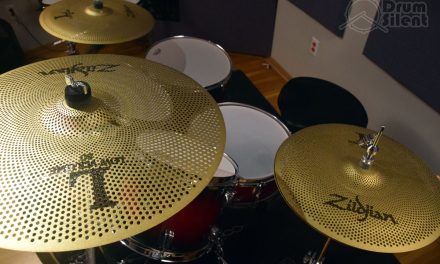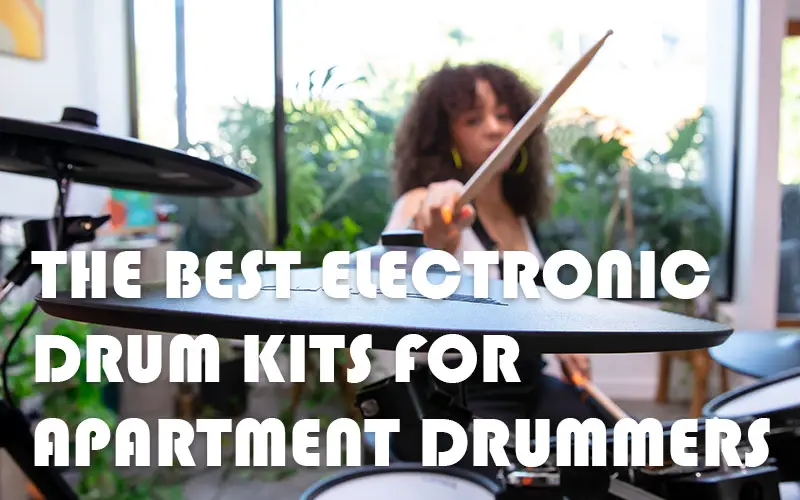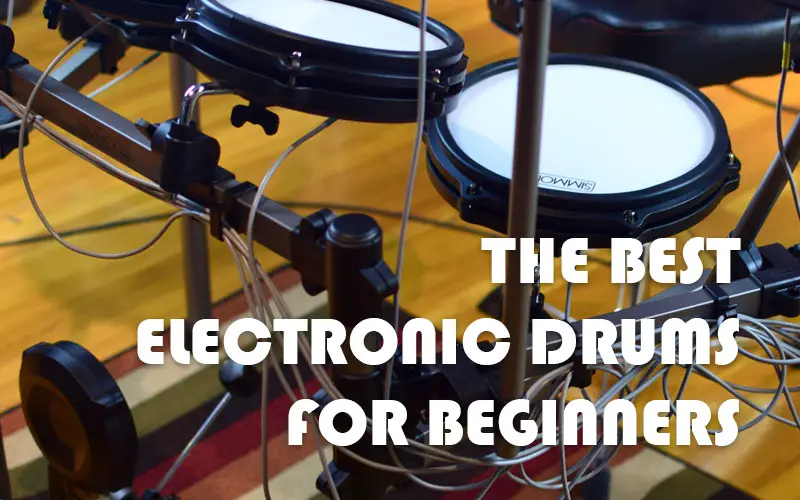Electronic drums are a great option for practicing for many reasons. They aren’t a complete replacement for acoustic drums in some cases, but using electronic drums to practice in situations where you can’t use an acoustic kit is highly beneficial to pushing your skills forward.
Electronic Drums Can Help You To Practice More
In my case, the biggest reason that I use electronic drums quite for practicing is because I live in an apartment. It’s just not feasible to set up an acoustic drum kit at home since it would be quite bothersome for my neighbors. I like where I live and I wouldn’t want to get kicked out due to noise complaints.
I’m able to use my electronic drum kit at home to practice rudiments, timing, syncopation, coordination and stuff like that. I can work on different grip techniques and finger techniques. I can work on developing muscle memory, learn new patterns and beats and work out musical ideas I might want to use for recording projects.
Being able to do all that at home, whenever I want, is a huge advantage compared to the days where I could only play under the special circumstances where I could find a place to set up my acoustic drum kit. I struggled to really push my skills forward when I went through long periods of time without having a place to consistently keep my acoustic drum kit setup. Consistent practice is key to getting better, even if the conditions aren’t perfectly ideal.
Disadvantages to Practicing With Electronic Drums
Of course there are some drawbacks that I’ve experienced when practicing on electronic drums at home. The biggest drawback for me is the inability to play aggressively and work on endurance, which I especially need when I’m working up endurance levels to play a half hour or more of live death metal.
This isn’t so much an issue with the electronic drums, since I have an electronic kit that I can play just as hard as my acoustic kit if I want to. It’s more an issue with the fact that I live in an apartment and playing aggressively with lots of double kick bass is going to be pretty annoying for the people living below me.
Another potential disadvantage with electronic drums is just not having quite the same type of response from your pads as you’d get from an acoustic kit. Rubber cymbal pads can feel a little different than the hard surface of a cymbal. Mesh drum heads, while being pretty awesome, can feel a little different than mylar drum heads. Kick drum pads can sometimes feel more like practice pads when compared to the feel of a 22 inch bass drum batter head with some air pressure behind it. These differences in feel haven’t ever kept me from developing techniques though, and I’d rather practice with a slightly different feeling kit than not practice at all.
I also use a fairly compact electronic kit at home, mostly to save space. The pads are closer together and smaller than my acoustic kit, which is a difference for sure. I haven’t really had much of an issue with translating stuff I learn on my electronic kit to acoustic because of this, though, and it’s not really much of an issue for me to switch between the more compact electronic kit and a more spread out acoustic kit. It was something I was worried about before getting into electronic drums, but it’s really just been a non-issue overall.
The Disadvantages Can Turn Into Advantages
I have found that the disadvantages of playing on electronic drums in an apartment have turned into some advantages in terms of learning new skills and rounding out my skills.
When I’m practicing at home, I’m often playing with more of a light touch, focusing on accuracy and dynamics over playing hard. I have found this to be beneficial since it’s helped me learn to play at lower levels with good control, which has been a benefit overall.
I also tend to use a heel down technique and play more lightly on the bass drum rather than flat foot or heel up when playing at home, mostly to not send excessive vibrations into the floor which could lead to complaints from downstairs neighbors. This has actually helped me learn to control the beater with the heel down technique, something I would have probably never practiced much if I only played my acoustic kit and didn’t need to worry about volume.
It’s also pushed me into learning other styles of music beyond metal and heavy stuff. My entry into drumming when I was younger was metal and heavier music, so I just kind of fell into always playing hard and only really focused on powerful styles of drumming. Practicing in an apartment has pushed me into learning more stuff like funk, jazz, and other styles that I find fun to play without always needing to put a lot of power behind it.
Electronic Drums are Better Than No Drums
At the end of the day, if you’re hesitating to get an electronic kit due to the difference in feel, size or other things like that, I wouldn’t worry about it too much. If the only way you can practice consistently is by using electronic drums, it’s better than not practicing at all. Electronic drums also have some advantages over acoustic kits which can be fun. You’ll have a wide range of drum kit sounds to play with as well as the ability to use drum VST’s and record with MIDI. Drum modules have metronomes built right in which is great for practicing. It’s also pretty easy to hook up your phone and play along with your favorite music. Some of the better budget level drum kits are also more affordable than trying to piece together a good sounding acoustic drum kit. So don’t let the fact that you might need to use electronic drums hold you back from improving your skills and becoming a better drummer.

